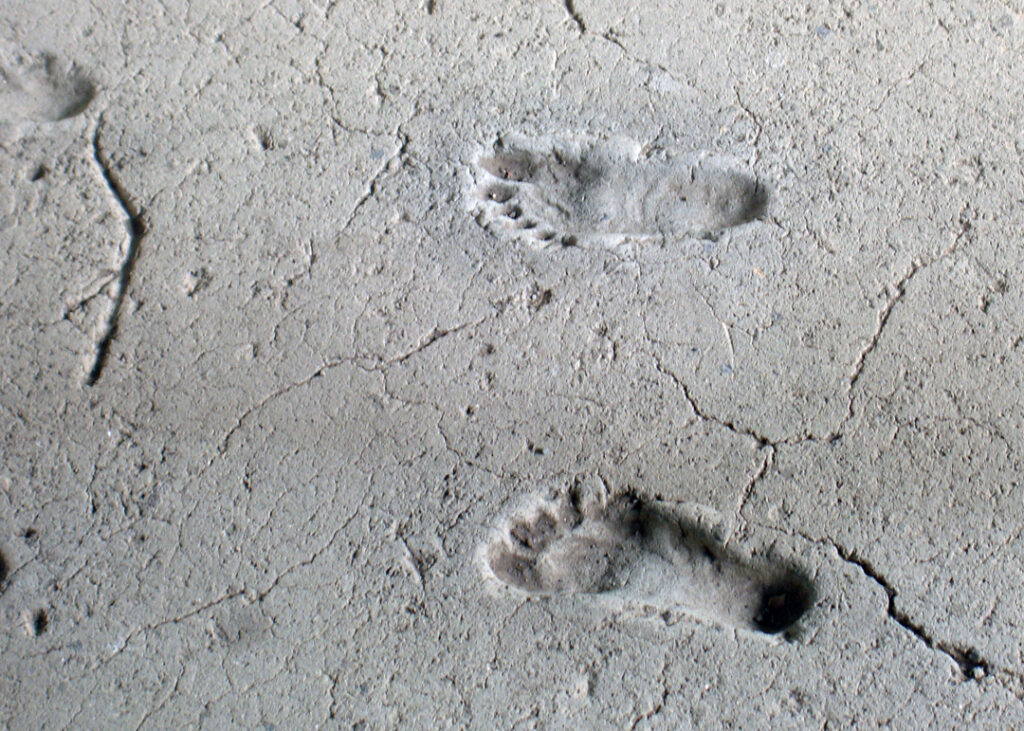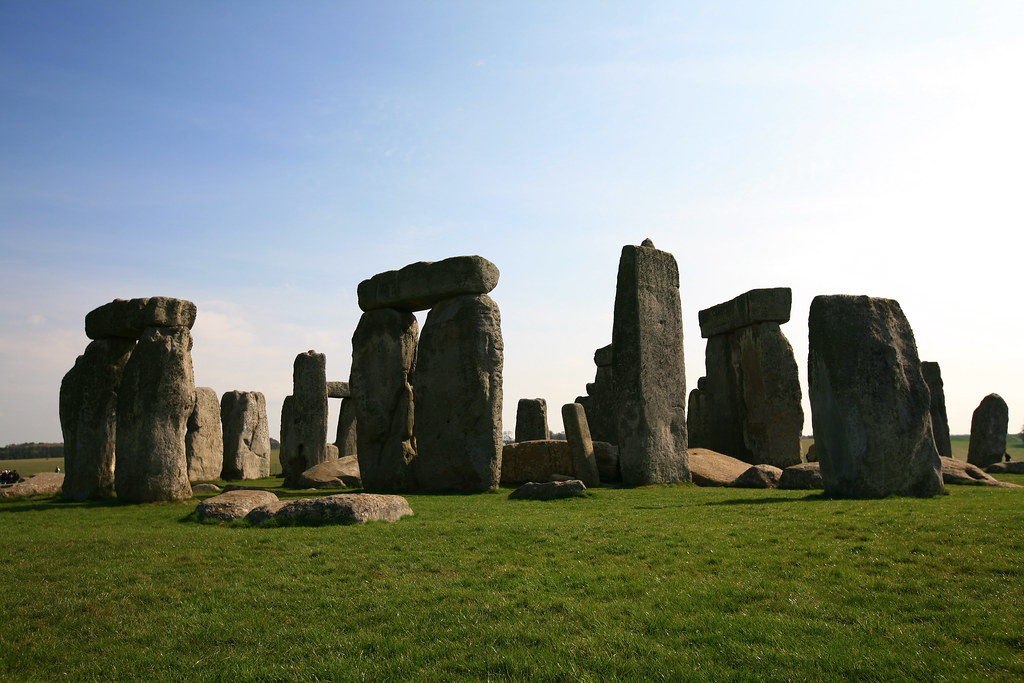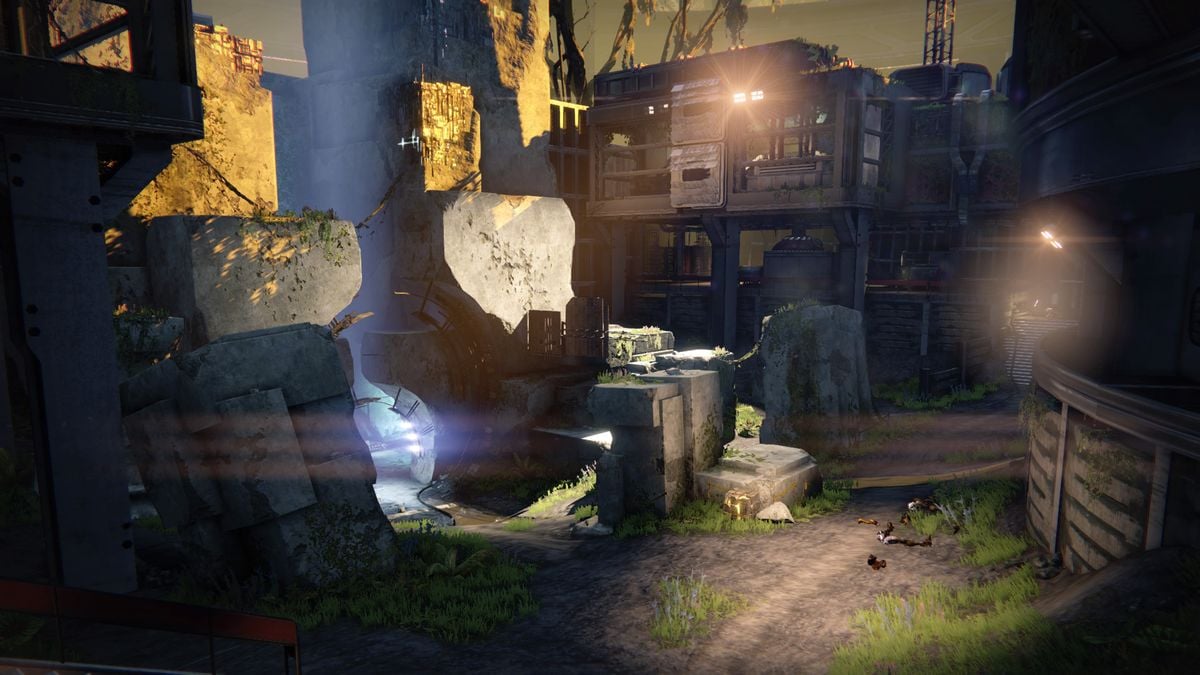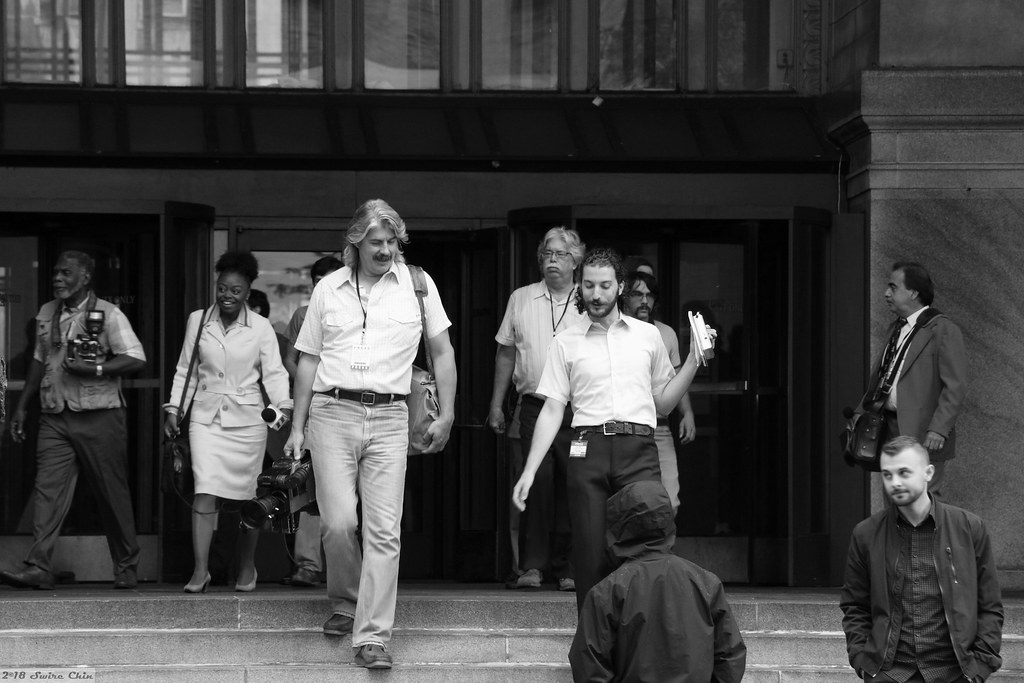
The human story is etched into our planet, hidden beneath soil, in submerged cities, and within silent ruins. Archaeology sparks a vivid imagination—a dream of unearthing lost treasures and ancient sites. This field offers a profound window into humanity’s shared journey, connecting us intimately with past lives, struggles, and triumphs.
Archaeology is a rigorous academic discipline, a delicate dance between scientific inquiry and humanistic understanding. It demands meticulous research, unwavering patience, and deep respect for cultural heritage. Students balance intense study with hands-on learning, delving into ancient texts and modern data analysis, shaping our collective identity by uncovering stories beneath the ground.
This exploration invites you to journey through the fascinating world of archaeology. We will trace its ancient origins, marvel at groundbreaking discoveries that shaped its scientific methodology, and understand its fundamental purpose. Prepare to uncover the essence of this vital field, equipping future scholars with knowledge of what it truly means to piece together the human narrative.

1. **Defining Archaeology: The Study of Human Activity**
Archaeology studies human activity through material culture, encompassing artifacts, architecture, biofacts, sites, and cultural landscapes. It is considered both a social science and a branch of the humanities, revealing facts and nuanced human narratives. This cross-disciplinary field integrates with anthropology, history, or geography.
The discipline involves systematic surveying, precise excavations, and thorough data analysis, all geared towards understanding the past. Archaeology distinguishes itself from palaeontology (fossil study) by focusing on human prehistory and history, tracing our lineage from the first stone tools at Lomekwi 3.3 million years ago.
This focus is crucial for understanding prehistoric societies—cultures without written records—comprising over 99% of the human past. Its goals range from understanding culture history to documenting profound societal changes. “Archaeology” fittingly means “the study of ancient history.”

2. **The Genesis of Archaeology: From Nabonidus to Antiquarianism**
Archaeology’s roots trace back to Ancient Mesopotamia, around 550 BC. King Nabonidus, the last Neo-Babylonian ruler, is remarkably considered the first archaeologist. His curiosity led him to excavate and restore ancient temple foundation deposits in Sippar and Harran, pioneering the investigation of the past through material remains.
Nabonidus also pioneered artifact dating. While searching for Naram-Sin’s temple, he assigned an age to his findings. Though inaccurate by about 1,500 years, it was a sophisticated effort, setting a precedent for systematic inquiry.
In Europe, science evolved from antiquarianism, focusing on empirical evidence, epitomized by Richard Colt Hoare’s motto: “We speak from facts, not theory.” This drive, combined with philosophical interest in Greco-Roman civilization, laid groundwork for systematizing archaeology during the 17th and 18th-century Enlightenment, paralleled by efforts in Imperial China’s epigraphy.

3. **Early Pioneering Excavations and Their Legacy**
Formal archaeological excavation began with explorations of Europe’s enigmatic ancient sites like Stonehenge. John Aubrey (1626–1697), a pioneer, meticulously recorded numerous megalithic monuments in southern England, analyzing findings by charting chronological stylistic evolution.
In Italy, Roque Joaquín de Alcubierre initiated groundbreaking excavations in Pompeii and Herculaneum, cities entombed by Mount Vesuvius in AD 79. His work, starting in 1748, revealed entire towns—complete with preserved utensils, frescos, and human shapes—profoundly impacting Europe and fueling interest in classical antiquity.
However, many early excavations were haphazard, overlooking critical concepts like stratification and context. Johann Joachim Winckelmann, in Rome in the mid-18th century, brought scientific rigor to Roman antiquities. He is celebrated as a founder of scientific archaeology and art history, systematically applying style categories and separating Greek art into distinct periods.
Read more about: Journey to the Abyss: Exploring 15 of Earth’s Most Profound Depths, from Ancient Lakes to Human-Engineered Chasms

4. **Developing the Scientific Method in Archaeology**
Archaeology’s transition to a rigorous science owes much to individuals like William Cunnington (1754–1810), regarded as the father of archaeological excavation for his meticulous recordings in Wiltshire. Thomas Jefferson also contributed, conducting trench method excavations on Native American burial mounds in Virginia in 1784, demonstrating early critical thinking regarding the “Moundbuilders” question.
A significant 19th-century achievement was stratigraphy—the idea that overlapping earth layers represent successive periods—borrowed from geology. Its systematic application to archaeology began with prehistorical and Bronze Age sites, with scholars like Jacques Boucher de Perthes and Christian Jürgensen Thomsen organizing artifacts chronologically.
Augustus Pitt Rivers, an army officer, further paved the way for scientific archaeology through excavations on his English land in the 1880s. He earned recognition as the first scientific archaeologist, meticulously arranging artifacts by type and chronologically, insisting *all* artifacts be collected and catalogued. William Flinders Petrie also laid core ideas for modern archaeological recording, developing a system for dating layers based on pottery that revolutionized Egyptology’s chronology. The early 20th century saw advancements under Sir Mortimer Wheeler, whose systematic grid system, refined by Kathleen Kenyon, marked archaeology’s professionalization.
Read more about: The Science of Speed: Unveiling How Just 15 Minutes of Fast Walking Each Day Can Add Years to Your Life

5. **The Core Purpose of Archaeological Inquiry** Archaeology’s profound purpose is to learn about past societies and human development, crucial for understanding vast stretches of human history predating written records. Over 99% of humanity’s development occurred within prehistoric cultures, which did not use writing, making archaeology the sole pathway to understanding these ancient existences.
Archaeology’s profound purpose is to learn about past societies and human development, crucial for understanding vast stretches of human history predating written records. Over 99% of humanity’s development occurred within prehistoric cultures, which did not use writing, making archaeology the sole pathway to understanding these ancient existences.
The archaeological record spans 2.5 million years, from the earliest stone tools (Oldowan Industry) to recent decades. Archaeology illuminates human evolution during the Paleolithic and sheds light on technological advances like fire mastery, sophisticated tools, metallurgy, early religion, and agriculture. Without it, little would be known about material culture predating writing.
Beyond prehistoric cultures, archaeology is vital for studying historic, literate civilizations through historical archaeology. Written records are often incomplete and biased, as literacy was frequently restricted to elites. The material record, meticulously excavated, often offers a more balanced representation. Archaeology provides the only means to learn of countless past peoples who left no written record, from the first cities to folk religion, dedicating itself to meticulous reconstruction, distinguishing itself from popular fiction and pseudoscience.
Read more about: Devon: An In-Depth Chronicle of England’s Southwestern Jewel, From Ancient Roots to Enduring Landscapes

6. **The Path to Becoming an Archeologist: Education and Fieldwork**
The dream of delving into the past ignites a passion for archaeology in many students. For aspiring professionals, early support and a clear understanding of the journey are vital. Archaeology demands detailed research, balancing writing tasks with crucial hands-on learning, guiding a student’s path more effectively than romanticized notions.
Studying archaeology is more than just digging; it involves a broad spectrum of skills: reading ancient texts, carefully handling fragile objects, and rigorously analyzing data. Students learn innovative methods to uncover and, critically, to protect the past for future generations, playing a vital role in shaping our sense of identity.
Most archaeology programs begin with robust foundational courses in history and anthropology. Students then progress into specialized topics: dating techniques, precise excavation rules, and artifact preservation. These classes cover archeology degree requirements, shaping a solid academic base and ensuring graduates are well-versed in both theory and application through field experience, which brings theory to life via summer digs or volunteer opportunities at active excavation sites.

7. **Essential Tools and Techniques for Modern Archaeologists**
The archaeologist’s toolkit blends traditional and cutting-edge, reflecting its evolution. Basic excavation gear includes trowels, brushes, measuring tapes, shovels, pickaxes, and sifters, all used with care to ensure no detail is overlooked. These enable unparalleled precision in studying archeology.
Modern archaeology increasingly harnesses sophisticated technology. Photography creates visual records. Drones offer revolutionary aerial perspectives for rapid surveys and high-resolution images. 3D scanners create intricate digital models of artifacts and sites without touching fragile objects, providing invaluable, detailed, permanent records. The scientific approach extends into the lab for chemical tests on residues or pollen analysis for environmental indicators, underscoring how each artifact relates to broader human life patterns.
Patience is a cardinal virtue in archaeological work; careful, deliberate digging reveals hidden stories that might be lost if rushed. A successful dig involves extensive planning, meticulous mapping, and seamless teamwork. Practical experience further hones skills like marking excavation grids, recording progress, logging findings, and effective communication. Respect for the site and local communities is a cornerstone of archaeological ethics, balancing knowledge with protection.
Read more about: Through the Ice: Astonishing Ancient Secrets Revealed by the Alps’ Melting Glaciers

8. **Specializations in Archaeology: Diverse Pathways to Discovery**
Not every archaeology student follows the same track, as the field offers a fascinating array of specializations, each uncovering unique facets of the human story. Some dedicated scholars immerse themselves in prehistoric studies, meticulously exploring sites that predate written records, piecing together narratives from cultures long vanished. Others turn their attention to ancient civilizations with rich textual traditions, where inscriptions and historical documents offer additional layers of understanding to the material culture unearthed.
Among the most captivating specializations is underwater archaeology, where intrepid researchers investigate shipwrecks and submerged cities, bringing to light nautical histories and forgotten maritime routes. Every focus area, regardless of its unique methodological demands, shares the core archaeology degree requirements, providing a foundational understanding that bridges across these diverse fields of inquiry.
Students might also choose to delve into bioarchaeology, analyzing human remains for vital clues about ancient diets, prevalent diseases, or the migratory patterns of past populations. Classical archaeology draws scholars to the magnificent sites of ancient Greece or Rome, while historical archaeology often tackles more recent periods, illuminating the material lives of communities documented, however imperfectly, in written histories.
To excel in these specialized fields, aspiring learners must not only study archaeology with unwavering dedication but also build a robust background in lab work and extensive field practice. Many programs offer seminars on museum studies or heritage management, equipping students with the knowledge of how artifacts are meticulously displayed and preserved for public education. By exploring these varied branches, future archaeologists can discover their true passions, whether it’s the intricate analysis of fossils or the thrilling revelation of lost port cities, each contributing a unique, invaluable piece to humanity’s grand historical puzzle.

9. **The Power of Theory: Shaping Archaeological Interpretation**
In the intricate tapestry of archaeological inquiry, theory serves as a vital loom, profoundly influencing how experts interpret the myriad objects and events they uncover. Scholars don’t merely collect artifacts; they rely on sophisticated cultural models and conceptual frameworks to understand why certain items appear in specific places, and what these patterns reveal about past societies. These theoretical constructs are then rigorously combined with field data, allowing researchers to create a more comprehensive and nuanced picture of human life in the past.
For students embarking on their journey to study archaeology, it can initially be a challenging endeavor to seamlessly blend classroom lessons, which often delve into complex theoretical paradigms, with the hands-on realities of digging or meticulous lab work. Yet, it is precisely this synergy between theory and practice that is absolutely vital for profound discovery. Theory acts as a guiding compass, helping archaeologists determine where to dig, what questions to ask, and how to frame their investigations. Simultaneously, practical skills are indispensable, enabling the correct identification, careful handling, and accurate interpretation of the objects brought forth from the earth.
Without the harmonious combination of these two approaches, some discoveries might remain hidden, their significance unrecognized, or their deeper meanings entirely misunderstood. A well-rounded archaeologist understands that the dirt beneath their fingernails is as important as the ideas circulating in their mind. This holistic perspective ensures that the material evidence is analyzed within a meaningful intellectual context, preventing isolated finds from becoming mere curiosities.
Students are actively encouraged to join academic conferences, engage in stimulating discussions with their professors, and delve into a diverse array of research papers. Such engagement reveals new ideas and perspectives that might not be covered in a single course, broadening their intellectual horizons. By training both the mind and the hands together, an archaeology major becomes exceptionally well-rounded, ready to connect patterns, draw insightful conclusions, and share their findings with broader audiences, enriching our collective understanding of human history. Archaeological theory today is a vibrant confluence, drawing from a wide range of influences, including systems theory, neo-evolutionary thought, phenomenology, postmodernism, agency theory, cognitive science, structural functionalism, Marxism, gender-based and feminist archaeology, queer theory, postcolonial thoughts, materiality, and posthumanism, all contributing to ever-evolving interpretations.

10. **Cutting-Edge Remote Sensing: Unveiling Hidden Worlds from Above**
Before the first trowel breaks ground, modern archaeological investigations often begin with a panoramic view from above, thanks to the revolutionary capabilities of remote sensing. This advanced methodology allows researchers to scout for potential sites across vast areas or gather crucial preliminary information about known sites and regions without any invasive excavation. Remote sensing offers a powerful, non-destructive lens into the hidden topography of the past.
Remote sensing instruments generally fall into two categories: passive and active. Passive instruments, such as satellite imagery, detect natural energy that is either reflected or emitted from the observed scene. They simply sense radiation originating from the object itself or reflected from an external source, offering a visual snapshot of the surface. Active instruments, on the other hand, emit their own energy and then record the returning reflections, providing a more dynamic and detailed interaction with the landscape.
One such active instrument is Lidar, which stands for light detection and ranging. Lidar employs a laser to transmit pulses of light, while a sensitive receiver measures the backscattered or reflected light. By precisely recording the time difference between the transmitted and returning pulses, and utilizing the known speed of light, the exact distance to an object can be determined. This technology is incredibly versatile, capable of determining not only ground topography but even atmospheric profiles of aerosols, clouds, and other atmospheric constituents.
Building upon Lidar technology, a laser altimeter uses the same principles to measure the height of the instrument platform above the surface. By combining this measurement with independent knowledge of the platform’s height relative to the Earth’s mean surface, an incredibly accurate topographic map of the underlying terrain can be generated. These advanced technologies provide unprecedented insights into complex, often overgrown or obscured landscapes, revealing subtle patterns and ancient structures that remain entirely invisible to the naked eye from the ground.

11. **Drones: Revolutionizing Aerial Archaeology**
Among the most exciting recent advancements in archaeological methodology is the widespread adoption of drones, which are rapidly transforming survey work and site preservation worldwide. These unmanned aerial vehicles significantly accelerate the process of reconnaissance and mapping, and crucially, they provide an invaluable tool for protecting vulnerable sites from illicit activities such as squatting, unauthorized construction, and mining.
In Peru, for instance, small, agile drones have enabled researchers to produce intricate three-dimensional models of archaeological sites with astonishing speed. What once took months or even years of painstaking manual mapping can now be accomplished in mere days or weeks, yielding high-resolution data that far surpasses traditional flat maps. Even drones costing as little as £650 have proven remarkably useful, democratizing access to this powerful technology.
By 2013, drones had already flown over at least six significant Peruvian archaeological sites, including the remote colonial Andean town of Machu Llacta, perched an astounding 4,000 meters (13,000 ft) above sea level. While these early efforts faced some challenges, particularly with altitude in the high Andes, plans for innovative solutions like drone blimps, often employing open-source software, are constantly evolving, pushing the boundaries of what is possible.
Jeffrey Quilter, an archaeologist with Harvard University, aptly summarized the versatility of this tool, stating, “You can go up three metres and photograph a room, 300 metres and photograph a site, or you can go up 3,000 metres and photograph the entire valley.” This sentiment underscores the drone’s ability to provide multiple scales of perspective, from minute detail to broad landscape. In September 2014, drones weighing approximately 5 kg (11 lb) were employed for sophisticated 3D mapping of the above-ground ruins of the Greek city of Aphrodisias, with the collected data undergoing analysis by the Austrian Archaeological Institute in Vienna. This aerial perspective is not merely a convenience; it is fundamentally transforming how quickly and accurately archaeological sites can be documented, understood, and ultimately, preserved.

12. **Advanced Field Methodologies: Precision and Practice**
Practical experience stands as a cornerstone in shaping an archaeology major, imbuing students with powerful skills that extend far beyond theoretical knowledge. Through hands-on training, students learn to meticulously mark excavation grids, record daily progress with unwavering precision, and log each finding with an exactitude that ensures data integrity. They often maintain detailed journals to meticulously track soil layers or the precise spatial location of every artifact, creating a living record of the excavation process.
Such accurate and comprehensive notes are absolutely crucial, as they enable other researchers to verify data and reconstruct the context of discoveries long after the initial excavation. Effective communication among team members is equally vital; in the field, archaeologists constantly share insights, collaborate on interpretations, and strategically divide tasks to optimize the excavation process. This collaborative spirit ensures that no detail is overlooked and that the collective understanding of the site is continuously enhanced.
Becoming a proficient archaeologist also demands a keen eye and an unwavering alertness for subtle changes in soil color or texture, which can often hint at the presence of hidden objects or features beneath the surface. Another essential skill involves the adept use of reference tools, such as historical site maps or archival records, to anticipate what might lie underground, guiding the excavation strategy. While modern mapping software and GPS devices provide invaluable guidance, traditional methods like compass readings and measuring tapes remain fundamentally vital for on-site precision.
Above all, an profound respect for the archaeological site itself is an unshakeable cornerstone of the profession. Archaeologists are meticulously careful not to inadvertently damage delicate structures or fragile artifacts, embodying a deep commitment to preservation. This ethical consideration extends beyond the physical site to embrace local communities, whose heritage is being studied and preserved, ensuring that the pursuit of knowledge is balanced with profound cultural sensitivity and guardianship.

13. **Archaeology and Community Engagement: Bridging Past and Present**
Archaeology, by its very nature, delves into the stories of countless human groups, making respectful and sensitive community engagement an indispensable ethical obligation for all researchers. When studying ancestral sites or the cultural heritage of living communities, archaeologists must act with the utmost respect for each culture’s unique traditions and perspectives. The discovery and handling of human remains, in particular, calls for profoundly careful and empathetic approaches.
Across different regions, specific laws provide frameworks for such sensitive processes, but local beliefs and community protocols equally shape what is considered permissible and appropriate during an archaeological project. Establishing close working relationships with communities is not merely good practice; it is foundational for building trust and fostering enduring friendships. This collaboration often opens doors for archaeologists to learn invaluable insights about customs directly tied to artifacts, burial grounds, or the historical significance of a site from those who hold the deepest ancestral connections.
Cultural sensitivity extends profoundly to how findings are shared and disseminated. Researchers must diligently avoid language that might misrepresent or misinterpret a group’s heritage, ensuring that historical narratives are presented accurately and respectfully. Consulting with local experts is paramount, helping to confirm factual details and honor cherished traditions, thereby safeguarding the dignity of living descendants and cultivating a spirit of genuine cooperation.
Ethical considerations also weigh heavily on questions of artifact ownership. Debates frequently arise regarding who should be the rightful custodians of items unearthed from ancient sites. Many believe that these irreplaceable treasures intrinsically belong in close proximity to where they were originally found, within the care of the communities whose ancestors created them. As a fundamental part of an archaeology major, students are guided to explore these complex ethical topics, internalizing the profound realization that studying archaeology transcends merely unearthing objects; it is, at its core, deeply about people—their past, their present, and their future.

14. **Diverse Career Horizons: Beyond the Dig Site**
Graduates with an archaeology degree discover a surprisingly broad array of professional opportunities, extending far beyond the romanticized image of digging in dusty ruins. Many find fulfilling careers within museums, contributing their expertise to the meticulous arrangement of exhibitions, conducting vital research projects, or specializing in the conservation of ancient artifacts. Others transition into consultancy roles, advising construction companies on how to diligently protect historical sites before any new building commences, ensuring that development respects cultural heritage.
Government agencies frequently hire archaeologists to survey public lands, conducting impact assessments and ensuring that precious cultural resources remain intact and safeguarded for future generations. Academia also offers rewarding pathways, with universities providing roles in teaching, guiding the next generation of archaeologists, and engaging in advanced research that pushes the boundaries of our knowledge. The private sector, particularly in cultural resource management, offers dynamic opportunities for teams to assess sites for potential discoveries or mitigate risks to historical assets.
Beyond these direct applications, the robust analytical and research skills cultivated during an archaeology major often open doors to tangential fields. Some archaeology students transition into writing, photography, or even filmmaking, leveraging their deep knowledge of the past to craft engaging and authentic narratives for wider audiences. For those who pursue advanced degrees, specialized concentrations like zooarchaeology (the study of animal remains) or geoarchaeology (the study of archaeological sites within their geological context) become available, offering even more focused research pathways.
Every one of these diverse routes demands the strong foundation of skills developed during an archaeology major, including keen curiosity, meticulous problem-solving abilities, and effective communication. Whether meticulously analyzing pot fragments in a quiet laboratory, or confidently leading a team in the challenging environment of a field excavation, archaeologists are instrumental in bringing history to life. Their profound and dedicated work ultimately preserves humanity’s shared heritage for both present and future generations, ensuring the stories of the past continue to inspire.
Read more about: Richard Chamberlain: From ‘Dr. Kildare’ Heartthrob to ‘Miniseries King,’ A Comprehensive Retrospective of a Screen and Stage Icon.

15. **The Enduring Legacy: Archaeology’s Continuous Unfolding**
Archaeology offers an unparalleled window into humanity’s shared journey, an epic narrative that spans millions of years and countless cultures. Students drawn to this field quickly learn that it requires not only intellectual curiosity but also immense patience and a truly open-minded spirit, ready to embrace the unexpected revelations of the past. The path to an archaeology major is one that demands unwavering dedication to both rigorous theory and essential practical application, forging a well-rounded scholar and practitioner.
From mastering precise excavation methods to developing a nuanced understanding of complex cultural dynamics, each step in an archaeologist’s training prepares them for a life rich with discovery. By diligently meeting archaeology degree requirements, students gain invaluable access to transformative field schools, enriching internships, and opportunities for global research travel, experiences that profoundly deepen their understanding. Through these immersive engagements, they not only uncover artifacts but also grapple with deeper, more profound questions about human behavior, societal evolution, and the very essence of human existence.
An archaeologist’s work extends far beyond merely collecting old objects; they are, in essence, masterful puzzle solvers, piecing together vanished stories using a potent blend of scientific rigor, collaborative teamwork, and unwavering respect for every culture they encounter. This meticulous and ethical work honors the lives of those who came before us, giving voice to the voiceless and context to the forgotten. For those willing to dedicate themselves to studying archaeology and to relentlessly honing their skills, a multitude of deeply rewarding career paths await, each offering a unique opportunity to contribute to our collective human story.
Archaeologists can shape captivating museum exhibits, develop robust strategies to protect invaluable heritage sites, or pursue advanced research that redefines our understanding of ancient civilizations. Each choice contributes profoundly to our collective knowledge, ensuring that the tapestry of human history is continually enriched and understood through the tireless dedication of archaeologists worldwide.
Ultimately, the field of archaeology is an ongoing narrative, a continuous unfolding of humanity’s incredible journey across millennia. Every new discovery, every re-evaluation of theory, and every innovative application of technology adds another crucial layer to our understanding of who we are and where we come from. As archaeologists continue their dedicated work, piecing together the fragments of vanished worlds, they illuminate not just the past, but also our shared human identity, ensuring that the echoes of ancient lives resonate through the present and into the future.



